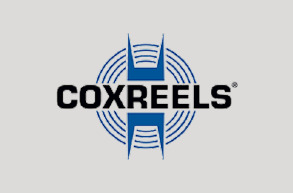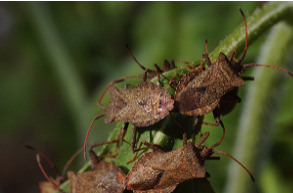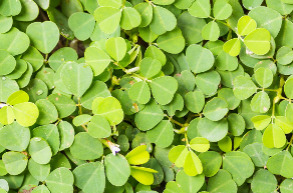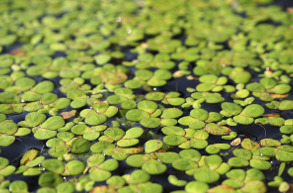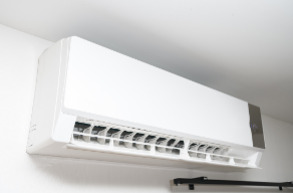Creeping Bentgrass Control
Most Effective Products
Creeping Bentgrass Control: How To Get Rid of Creeping Bentgrass
Creeping bentgrass is a cool-season perennial grass that is commonly used as turf on golf courses. However, when it grows among other grasses, it can become an unpleasant weed. The leaves of Creeping Bentgrass are typically long and slender. Creeping Bentgrass is also bright green in color, so its easy to be able to identify it and set it apart from your desired grass.
Creeping Bentgrass usually makes its way onto lawns by being blown onto the lawns from the air or due to birds flying by and dropping a runner of the plant onto your yard. If you examine patches of Creeping Bentgrass you will notice that it contains lots of stems, or stolons, that extend along the surface of the soil. These stolons allow Creeping Bentgrass to spread rapidly on a lawn.
Bentgrass becomes very puffy-looking when maintained at mowing heights above one inch. It is also susceptible to a lot of different lawn diseases. The invasive weed also does not grow as tall as most turfgrasses and forms mats and patches that are thick and dense all over lawns. This is how Creeping Bentgrass operates and if left to its own devices without intervention, it will choke out your lawn grass and zap your lawn soil of all its nutrition.
If you want Creeping Bentgrass gone, our easy DIY treatment guide will show you exactly how to eliminate this grassy weed permanently. Follow the step-by-step instructions below using the recommended herbicides to the right and you will be successful in removing Creeping Bentgrass quickly and affordably.
Identification
Creeping Bentgrass can be identified via their lighter bluish-green color which can stand out amongst your desired grasses where it could grow quite dense and thick. It has a fine-texture and has flat and narrow leaves that are rolled in the bud. There are no auricles and a long tapered ligule is present. Creeping bentgrass grows low to the ground and has a shallow root system.
Use the above description and image provided to help you identify Creeping Bentgrass on your lawn. When you are unsure or can't quite pinpoint exactly which kind of weed you are encountering in your yard, turn to the experts to ID the weed for you.
Take a high-resolution photo of the unwanted weed with your phone and shoot it over to our email address. We will respond back to you quickly with not only the correct ID of the plant, but we will also give you expert recommendations of products and techniques to apply to remove that weed from your lawn.
Inspection

Where to Inspect
Creeping Bentgrass is a cool-season grass but it also adaptable to warm-season territories. It is adapted to cool, humid regions and prefers sunny areas but can tolerate some shade. When Creeping Bentgrass grows high it does not look good because it doesn't like to grow tall and instead bends over and makes for a very unattractive area of your lawn.
What To Look For
When inspecting, you will want to see how severe a problem you have so you can gauge how much product you need and also this will help you figure out where to focus your treatment application.
If you haven't had Creeping Bentgrass as an issue on your lawn before, you may be wondering how it got there. Creeping Bentgrass seeds can come through the air, birds can drop a runner or it can reproduce by what is called stolons. The reason why it's called Creeping Bentgrass is that as it creeps out on a landscape, it will produce more and more roots and continue to creep out into the lawn. Just one little piece of grass could take root and become a problem.
Treatment
Please be sure that when handling any type of herbicide, you are properly protecting your skin and eyes with safety equipment. Goggles, gloves and long-sleeved clothing should be the minimum.
Creeping Bentgrass is hard to get rid of without the help of chemical intervention. Apply Tenacity Herbicide, which is a selective, systemic herbicide that does a great job against Creeping Bentgrass while sparing harm to desired turfgrasses.
Step 1: Mix and Apply Tenacity

Before mixing Tenacity into your sprayer, determine how much Tenacity you need by measuring the square footage of your target area (measure and calculate the length of your lawn X width). For best results in eradicating Creeping Bentgrass from your lawn. Mix Tenacity with a non-ionic surfactant, such as Alligare 90. This will help the Tenacity to better stick to the Creeping Bentgrass and not runoff.
For spot treatments, you can treat 1,000 sq. ft. by using a half teaspoon of Tenacity along with 1.5 teaspoons (0.25 fl. oz.) of surfactant in a gallon of water. Use the syringe that comes with the Tenacity for precise measuring. For acerage, apply Tenacity at 5 fl. oz. of product per acre in at least 30 gallons of water per acre at two or three week intervals for up to three applications.
Once the product is well-mixed in your sprayer, apply the product to the Creeping Bentgrass using a fan nozzle setting. This will create a nice even coat on the Creeping Bentgrass.
Spray about 6 inches beyond the patches to make sure you reach the stolons, or above-ground runners, that may spread out into the lawn, but are often not visible.
Step 2: Follow Up Application
This weed will likely require multiple applications. The most effective time for treatment is when the grass is green and actively growing in spring or fall, not when its brown and dormant in mid-summer. Once the grass in the treated area is dead, rake it out and reseed the spot. However, since the seeds can survive a year, you may need to also treat your lawn with a pre-emergent product in the fall and the following year.
Prevention

You can prevent the return of Creeping Bentgrass after it has been controlled with cultural practices that will hinder the redevelopment of this invasive grassy weed. You can also apply a pre-emergent to your lawn like Barricade in the fall and the following year.
Creeping bentgrass often shows up in lawns that are older, especially ones that are overwatered or fertilized heavily and mowed too short. Therefore, another aspect for future control is to do deep, infrequent watering schedule and mow at least 2½-3 inches high which can give the desirable grasses a competitive edge against bentgrass.
Key Takeaways
- Creeping bentgrass is a difficult to remove weed typically found on golf courses and mowed short for tees, fairways and greens. However, it can creep into a home lawn and give the lawn an inconsistent look.
- We recommend using Tenacity Herbicide to selectively remove Creeping Bentgrass from your lawn. Follow label directions carefully when applying.
- Prevent the reappearance of creeping bentgrass by applying pre-emergent (Barricade) in the fall and maintenance practices that promote a healthy, nutrient-rich lawn.




















































